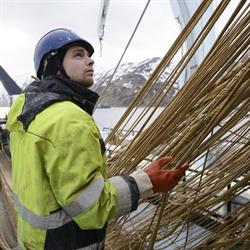 With billions of people relying on fisheries for their livelihoods or as their primary protein source, this ‘holiday’ is becoming increasingly important, and seafood consumers–like you–have an important role to play.
With billions of people relying on fisheries for their livelihoods or as their primary protein source, this ‘holiday’ is becoming increasingly important, and seafood consumers–like you–have an important role to play.What is World Fisheries Day?
Celebrated annually on November 21st, World Fisheries Day is a time to focus on the importance of maintaining the world’s fisheries for generations to come. The goal of this holiday is to highlight the important role fisheries–and the people involved in them–play in our lives. The day also acknowledges and addresses some of the problems facing global fisheries today.Wait, so, what is a fishery?
Put simply, a fishery describes the harvesting a specific kind of fish or fish from a defined area. Fisheries can be defined by the type of fish being caught, the gear type used to catch it, the location, or the type of boat used to catch it. At the MSC, a fishery can include one or multiple species but is clearly defined by scientific factors (like data on the location & amount of the specific fish) or commercial factors (like the fishing gear used or type of vessel) and is agreed upon by all parties involved in the MSC assessment process.Why should I celebrate fisheries?
Lots of reasons! Did you know that more than 25% of the world’s dietary protein is provided by fish and that around 200 million people are directly or indirectly employed in the fish and seafood industries? That means that without healthy oceans and thriving fisheries, a large portion of the population would suffer. Seafood is also a unique source of protein because it is the world’s last major food source that is truly wild. From lakes to the open ocean, fishermen are out in the elements, working physically demanding jobs to bring us our favorite fish. Read more stories from life on the water here.
Seafood is also a unique source of protein because it is the world’s last major food source that is truly wild. From lakes to the open ocean, fishermen are out in the elements, working physically demanding jobs to bring us our favorite fish. Read more stories from life on the water here.Some fisheries are in trouble, however. According to the United Nations, over a third of the world’s fisheries are too heavily fished, and others are expecting population declines due to environmental factors like pollution, climate change, and habitat destruction.
Umm...shouldn’t we panic instead of celebrating?
No! Many fisheries and the communities involved in them around the world are working hard to ensure that fisheries are well-managed so we can have healthy oceans and that you and your family can enjoy seafood for generations to come.How do fisheries keep seafood available for future generations?
One of the ways fisheries can make sure they can continue fishing long into the future is by becoming Marine Stewardship Council (MSC) certified. A fishery wanting to become MSC certified has to prove that there are enough of the fish they want to catch, that they have minimal impact on the marine environment, and that there is good management in place to adapt to any changing conditions. These principles backed by science keep fisheries healthy so that you can enjoy seafood that’s good for you and good for the ocean. Today, over 17% of marine wild catch–defined here as fish from the ocean– is engaged with the MSC program. This is definitely worth celebrating. Especially, because, once fisheries are in the program they continue improving.
Today, over 17% of marine wild catch–defined here as fish from the ocean– is engaged with the MSC program. This is definitely worth celebrating. Especially, because, once fisheries are in the program they continue improving. Because scientific knowledge and best practices are ever evolving, all MSC certified fisheries are regularly reassessed and make additional improvements to ensure their sustainability methods meet current best practices.
Some improvements include attaching LED lights to fishing gear to prevent unintended catch, mapping fishing grounds, and building new partnerships. Take a look at some of the other ways fisheries are continually improving!
Next time you enjoy a delicious fish dish, remember the important work being done to keep the ocean healthy. Find out the important part you and your family play in this, and how you can protect sea life by eating ocean-friendly seafood.

